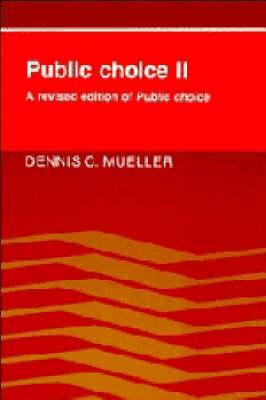Cambridge Surveys of Economic Literature
2 total works
This book discusses the main topics of the public-social choice literature of the past 40 years. Separate chapters discuss various applied public choice questions such as rent seeking, the growth of government, the rise and decline of nations, political business cycles, why people vote, and the nature and extent of redistribution. The book details normative issues in public choice, including Bergson-Samuelson social welfare functions, the Arrow and Sen impossibility theorems, the work of John Rawls, John Harsanyi, James Buchanan, and Gordon Tullock. This book is a major revision of Public Choice, containing eleven new chapters in addition to substantial revision and expansion. Separate sections containing proofs of the most important theorems have been added. It is appropriate for both graduate and undergraduate courses in public choice economics and political theory, or as a supplement in courses dealing with related questions such as public finance.
This book represents a considerable revision and expansion of Public Choice II (1989). Six new chapters have been added, and several chapters from the previous edition have been extensively revised. The discussion of empirical work in public choice has been greatly expanded. As in the previous editions, all of the major topics of public choice are covered. These include: why the state exists, voting rules, federalism, the theory of clubs, two-party and multiparty electoral systems, rent seeking, bureaucracy, interest groups, dictatorship, the size of government, voter participation, and political business cycles. Normative issues in public choice are also examined including a normative analysis of the simple majority rule, Bergson-Samuelson social welfare functions, the Arrow and Sen impossibility theorems, Rawls's social contract theory and the constitutional political economy of Buchanan and Tullock.

